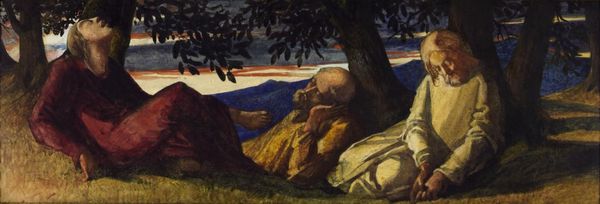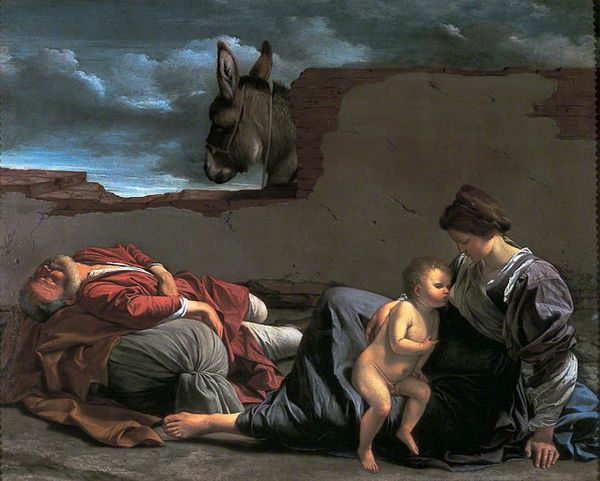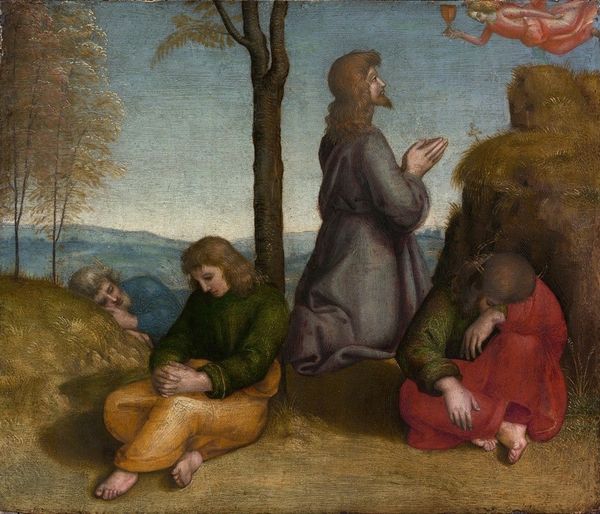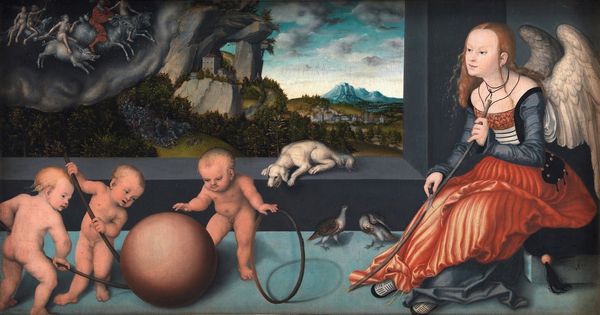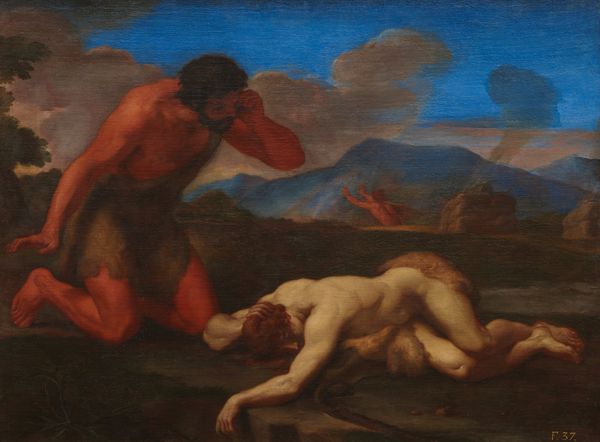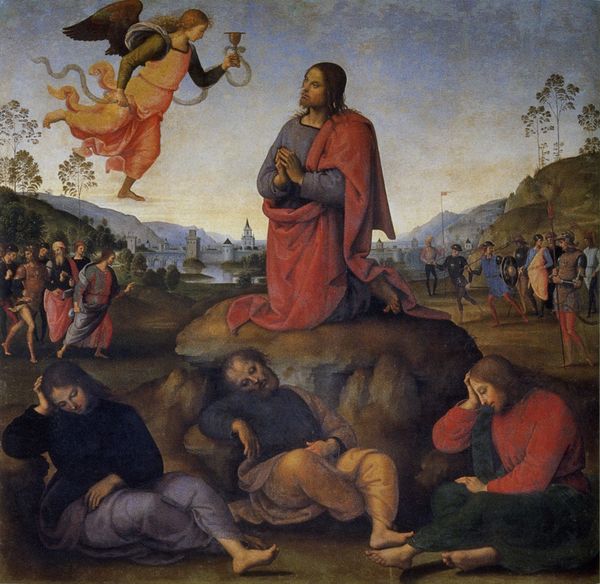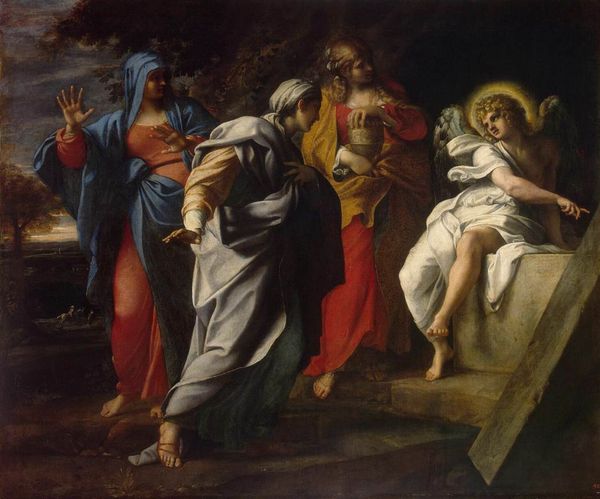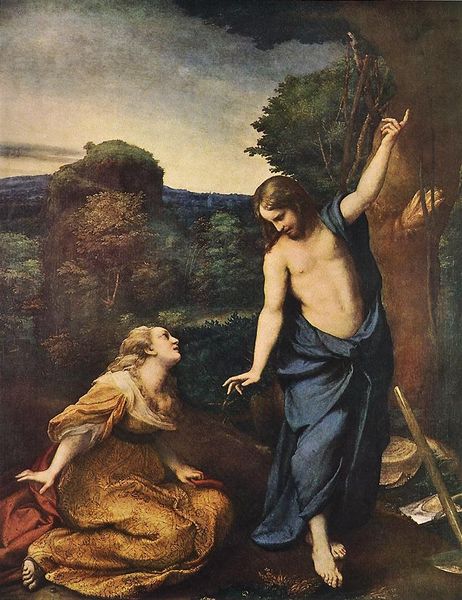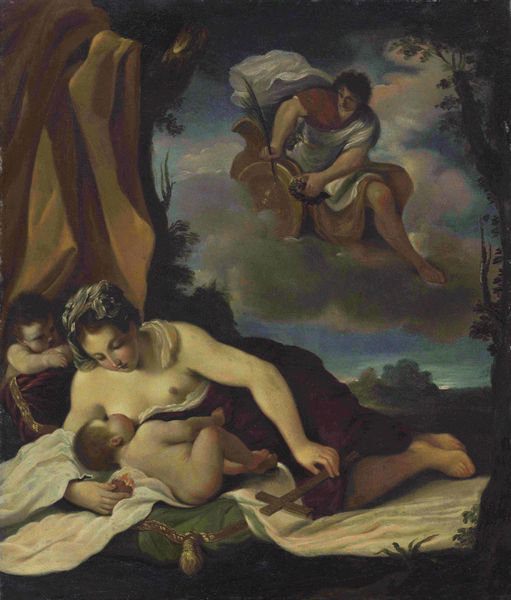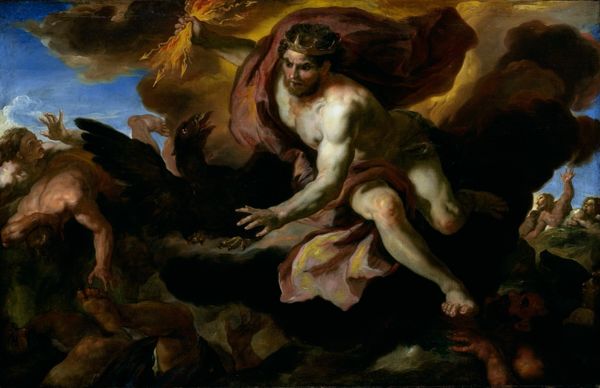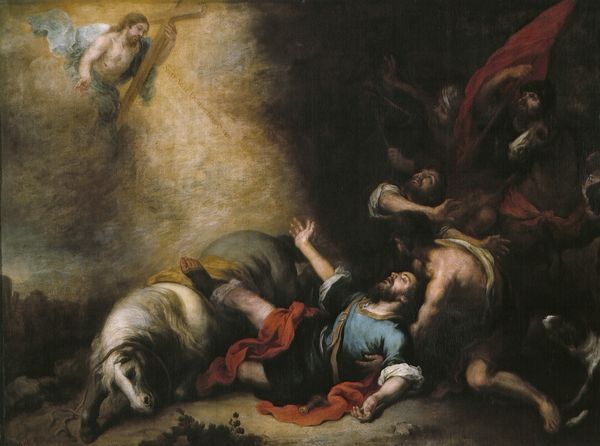
painting, oil-paint
#
allegory
#
narrative-art
#
baroque
#
painting
#
oil-paint
#
landscape
#
oil painting
#
vanitas
#
chiaroscuro
#
italian-renaissance
#
nude
Copyright: Public domain
Editor: So this is Juan Bautista Maíno's "La Magdalena penitente" from 1612, currently housed in the Museo del Prado. It's an oil painting that depicts Mary Magdalene in a cave, seemingly in deep contemplation. The composition is quite striking with the dramatic lighting and the inclusion of a skull. What strikes you most about this piece? Curator: The "penitent Magdalene" is such a loaded image in art history. Maíno positions her nude body as central, immediately framing her through a male gaze. But what’s fascinating to me is how he uses the conventions of the vanitas still life, particularly the skull, to perhaps critique that very objectification. Where do you see the seeds of her agency in the face of the accepted representation of the time? Editor: I see what you mean. Her downcast eyes and folded hands could be interpreted as submission, but also perhaps as a reclaiming of inner space. Does the stark contrast between her luminous skin and the dark, rugged landscape play into this tension between objectification and agency? Curator: Absolutely. The chiaroscuro amplifies the drama, but it also sets up a visual dichotomy. She’s literally caught between light and shadow, echoing the internal conflict within her narrative, caught between societal expectations and personal redemption. Consider the cross as a signifier. Is it a symbol of liberation or continued subjugation? Editor: That’s a compelling question. It really makes you think about the complex role of religion in shaping perceptions of female identity. Curator: Precisely! And that's why exploring art like this through a feminist lens opens up new avenues for understanding the power dynamics embedded within these supposedly timeless masterpieces. Editor: This has completely shifted my perspective. I was initially focused on the surface-level beauty, but now I see so many layers of social and historical commentary. Curator: It's a continual unearthing. We all keep digging into these representations to reveal their complicated intersectional implications for our own time.
Comments
No comments
Be the first to comment and join the conversation on the ultimate creative platform.
